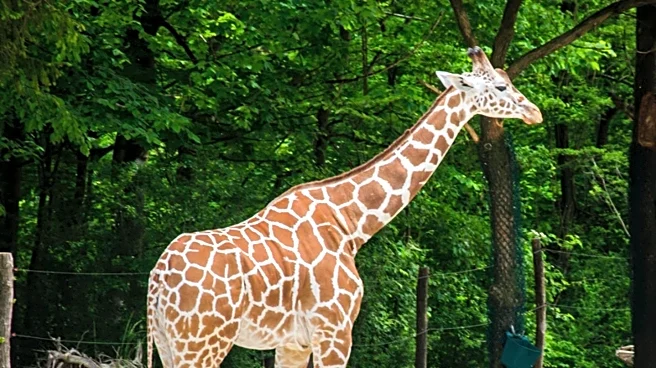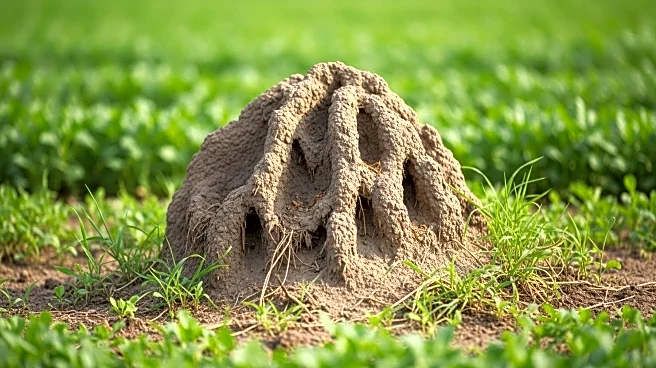What's Happening?
In the Lehigh Valley, northern walkingsticks have been observed mating as the autumn season begins. These insects, resembling 3- to 4-inch-long brown twigs, use their camouflage to avoid predators. Typically found in deciduous woods, female walkingsticks release their eggs singly on the ground. The mating behavior of these insects is a natural occurrence during this time of year. Additionally, the article touches on other insect-related observations, such as the relocation of ground bees' nests and the challenges of identifying moth species due to the vast diversity in North America.
Why It's Important?
The observation of northern walkingsticks mating provides insight into the ecological dynamics of the Lehigh Valley region. Understanding the behavior and life cycles of local insect species is crucial for biodiversity conservation and ecosystem management. These observations can inform environmental policies and educational programs aimed at preserving natural habitats. Moreover, the article highlights the importance of citizen science and community engagement in documenting and understanding local wildlife.
What's Next?
As autumn progresses, further observations of insect behavior and migration patterns are expected. Local naturalists and enthusiasts may continue to document these occurrences, contributing to a broader understanding of regional biodiversity. Educational initiatives may also emerge, encouraging the public to engage with and learn about their natural surroundings.
Beyond the Headlines
The article underscores the role of technology in modern wildlife observation, with apps like Merlin aiding in species identification. This reflects a broader trend of integrating digital tools into environmental education and citizen science. The accessibility of such technology empowers individuals to participate in ecological research and conservation efforts.










